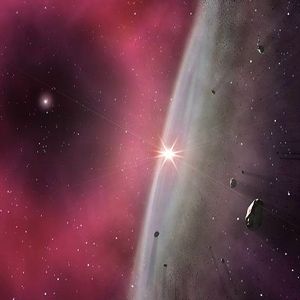
© Julian BaumEarth experienced an especially heavy bombardment of asteroids and comets early in the solar system's history.
Contrary to prevailing wisdom, Jupiter does not protect Earth from comet strikes. In fact, Earth would suffer fewer impacts without the influence of Jupiter's gravity, a new study says. It could have implications for determining which solar systems are most hospitable to life.
A 1994 study showed that replacing Jupiter with a much smaller planet like Uranus or Neptune would lead to 1000 times as many long-period comets hitting Earth. This led to speculation that complex life would have a hard time developing in solar systems without a Jupiter-like planet because of more intense bombardment by comets.
But a new study by Jonathan Horner and Barrie Jones of Open University in Milton Keynes, UK, shows that if there were no planet at all in Jupiter's orbit, Earth would actually be safer from impacts.
The contradictory results arise because Jupiter affects comets in two different, competing ways. Its gravity helps pull comets into the inner solar system, where they have a chance of hitting Earth, but can also clear away Earth-threatening comets by ejecting them from the solar system altogether, via a gravitational slingshot effect.


